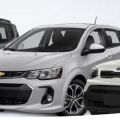6 Debunked Myths About Cars You Should Stop Believing In

Even though many people have cars and know how to use them, there are a lot of myths and misconceptions that are extremely popular. Some of them are simply outdated while others can be harmful and lead to unpredictable consequences. That’s why it is important to distinguish myths and facts. Here is a list of debunked myths about cars you should stop believing in.
1. It is better to drive slowly
Some inexperienced drivers think that the slower they drive, the better their chances of getting to the destination without an accident. At first glance, this sounds reasonable but the reality is that it is a dangerous misconception.
If the vehicle's speed is lower than the flow rate, it is a constant disturbance to other drivers. Most drivers will slow down before such a slow-moving car. Sooner or later, someone can drive into the back of the car or it will provoke a car collision. That’s why it is best to drive with an average flow rate, especially on a highway.
2. Driving at night is safe
Another common misconception among new drivers is that it is safer to drive at night rather than throughout the day. Traffic in the dark is lower and it seems that the night ride is safe. However, statistics confirm the opposite. The death rate in road accidents at night is three times higher than during the day.
The reality is that a person's peripheral vision and depth of perception are weakened in the dark. This means that safe driving at night requires considerable driving experience.
3. It is better to buy a car than to lease
Many people think that is better to be a full-fledged car owner than to lease it. Indeed, it can be valid in cases you travel a lot and don’t want to buy extra miles or you use a car for work and can’t maintain it’s perfect condition.
However, it may be more profitable to lease a car. You can choose a perfect vehicle for you among the best cars to lease and if you will not like it or want to change something, you can always pick another car.
4. When the low fuel indicator is on, there are 2 gallons of fuel in the tank
Some people feel nervous when they see a low fuel indicator lit. Is enough fuel left to reach the gas station or not? However, some people think that the indicator appears on the dashboard when there are up to 2 gallons of fuel in the tank. But the reality is that this myth can make you walk with a canister to the nearest gas station.
It is important to understand that the amount of fuel reserve is not standardized. It varies within 10-15% of the volume of the gas tank. The exact value can be found in the vehicle manual. But if the manual is not at hand, it is better to proceed from the minimum value. This means that a car with a standard 12-gallon tank has a 1.2-gallon reserve. This is enough to drive about 37 miles on the highway and 18 in the city.
5. If you want to save money, turn off the air conditioner
This myth has a truthful background since an air conditioner uses about 0.1 gallons of fuel per hour. It seems that you can cool the car with a free stream of air from the windows. But the reality is that dropped windows increase the aerodynamic resistance of the car by 3-5%.
It means that fuel consumption with open windows increases by 0.2 gallons. Most modern cars look so “round” because they save fuel due to aerodynamic characteristics and are designed to use the climate system.
6. It is not necessary to fasten the safety belt on the back seat
Many people think that the back seat in the car is safer, especially because of the soft seat in front of it. However, during the first seconds of an accident (when the car has already stopped) the passengers are still moving forward. This means that the unfastened passenger is literally flying. The passenger can fly out together with the windshield and can injure the passengers that sit in front seats.
Other articles and publications:
Articles and publications of other companies:
- +1 (646) 270-9836
- Long Island City
- grantny.com













